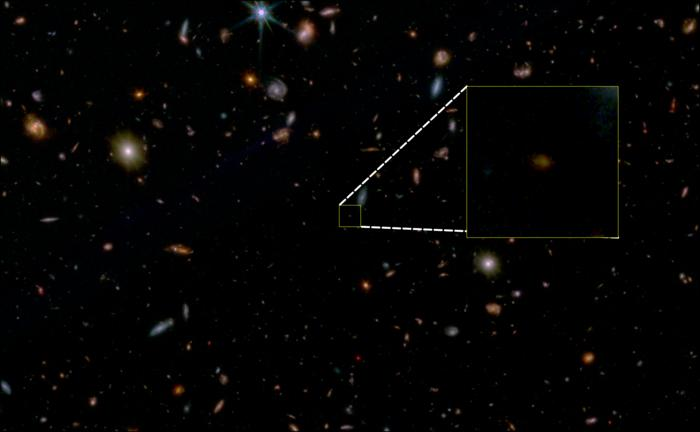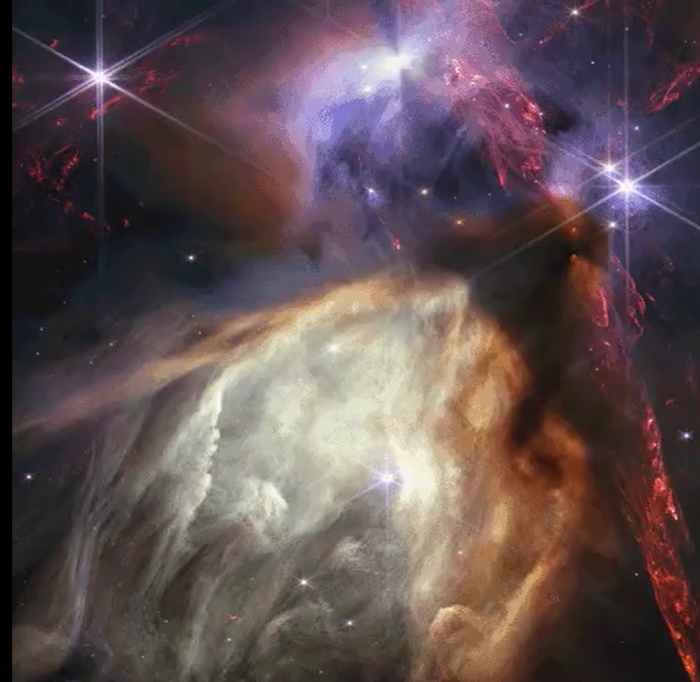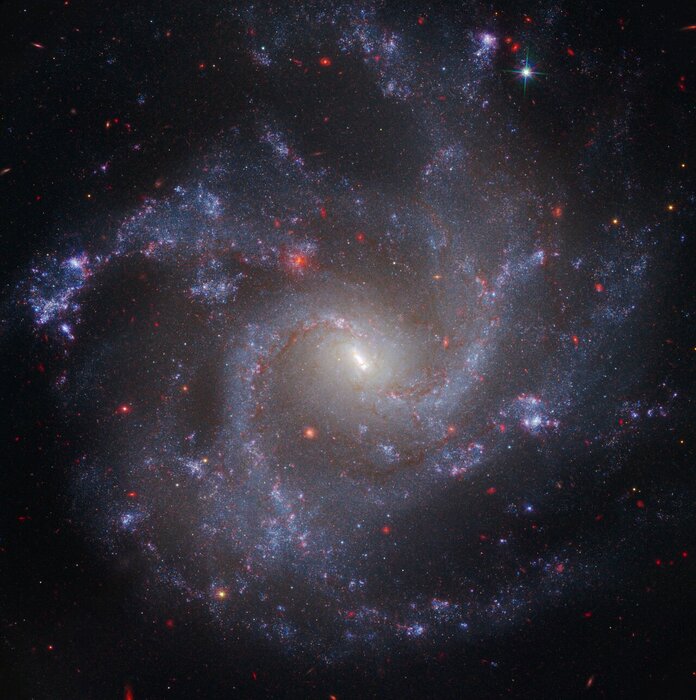The Webb telescope sends a selfie to Earth 1:06
(CNN) --
The James Webb Space Telescope gears up as it cools nearly two million miles from Earth.
The observatory shared its first selfie from space after testing its iconic golden mirror and near-infrared camera.
The Webb Telescope has been in the process of cooling and aligning its mirror segments since February 2, after reaching its orbital point beyond the Moon on January 24.
The telescope launched into space on December 25 and will be NASA's most complex and powerful observatory to date.
The James Webb Space Telescope has reached its final destination.
If the images look a bit blurry, that's to be expected, Webb team members said.
Right now, the telescope is still in the commissioning phase before it begins collecting scientific data and observations this summer, when we can expect it to release stunning new images of our universe.
This mosaic of images shows 18 points of starlight captured by corresponding segments of Webb's mirror.
Starlight Catch
The Webb telescope's most recent challenge was a test of the Near Infrared Camera, or NIRCam, which identified pinpoints of starlight from the same star in each of the 18 hexagonal segments of its huge mirror.
The telescope pointed its mirrors at a bright lone star in the constellation Ursa Major called HD 84406.
"This star was specifically chosen because it is easy to identify and is not close to other stars of similar brightness, which helps reduce confusion," according to the Webb team.
The Webb telescope created a mosaic of 18 points of starlight when mirror segments reflected this light onto the telescope's small secondary mirrors and NIRCam's detectors.
advertising
Images like the ones NASA shared Friday may help the Webb team make sure mirrors are perfectly aligned before the observatory zeroes in on exoplanets and distant galaxies, forever changing the way we see the universe.
Over the next month, the mirror segments will be brought together through careful adjustments so that those 18 points become the image of a single star.
"The entire Webb team is very pleased with how well the first steps of imaging and aligning the telescope are going. We are happy to see light making its way into NIRCam," said Marcia Rieke, principal investigator for the instrument. NIRCam and professor of astronomy at the University of Arizona, in a statement.
The 18-point mosaic is the result of Webb capturing 1,560 images over 25 hours, although the observatory was able to find the star in the first six hours using only 16 images.
The 18 dots are just the center of a giant mosaic with more than 2 billion pixels.
These pinpoints of starlight are just the center of a massive mosaic captured by Webb as he focused on a single star.
"This initial search covered an area the size of the full Moon, because the segment points could have been that spread out across the sky," said Marshall Perrin, Webb Telescope Associate Scientist and astronomer at the Space Telescope Science Institute in Baltimore, it's a statement.
The mirror selfie was captured by a special lens inside NIRCam that can take images of the primary mirror instead of what Webb sees in space.
The lens exists primarily for engineering and alignment, so it was an extra image that made the Webb team say "Gosh!" said Lee Feinberg, element manager for the Webb telescope at NASA's Goddard Space Flight Center. NASA in Greenbelt, Maryland.
The first test images from the Webb telescope include an unexpected selfie.
maintain temperature
Webb's orbit will keep the telescope aligned with Earth as our planet orbits the Sun. This alignment protects the telescope from heat given off by the Sun, Earth, and even the Moon.
It is imperative that the telescope is kept at a low temperature because it will observe the universe in infrared light and detect the faintest signals from objects in our distant universe.
Since infrared light can be detected as heat, the entire spacecraft must be shielded from bright heat sources.
Learn what temperatures the Webb telescope must withstand 0:56
The spacecraft includes a five-layer solar shield to protect Webb's giant mirror and instruments from the sun's scorching rays.
Webb's equipment must be kept at a very cold temperature of -370°F (223 degrees Celsius below zero) to function.
Some of Webb's instruments need to be even cooler to work, so they will continue to get colder for months to come.
Images taken by Webb in the future will be sharper and more detailed as the spacecraft cools and the mirrors align.
"This amazing telescope has not only spread its wings, but now it has opened its eyes," Feinberg said.
Webb Telescope







/cloudfront-eu-central-1.images.arcpublishing.com/prisa/TQ73US57UFGWTIXR7C3BS2OTIA.jpg)

